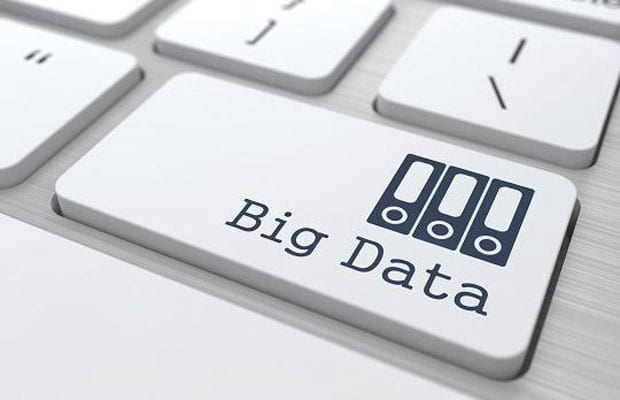Data analytics has never been more crucial to retail as it is in today’s competitive times. During festive seasons, how can big data best be leveraged by retailers to drive sales? FE gets two digital experts to present their views
Point of View: “Brick-and-mortar needs analytics too”
It is that time of the year again. Whether it is the e-commerce guys or the traditional brick and mortar stores, there’s palpable excitement in all corners of the retail space in India. The Internet is awash with information on how online retailers have been using analytics for years to improve their product positioning and conversion rates. On the other hand, brick and mortar stores have not only been stuck without those analytics, in many cases they have been relegated to serving as real-world catalogue showrooms for e-commerce companies.
Keeping in line with the rest of the world, however, physical stores still account for an overwhelmingly large portion of Indian retail. And like everywhere else, they have historically been laggards in harnessing the powers of analytics.
Let’s make no mistake. Brick-and-mortar stores need analytics as much as their online counterparts. High volume retailers like drugstore chains and grocery stores have found that end caps (displays set up at the end of aisles) work, but without the right analytics they will never know if end-caps cannibalise sales of the same item stacked halfway down the aisle. The manager of a men’s clothing section needs analytics to know whether primarily men or women shop her/his products, and if that shopping pattern changes during the day.
Now, as physical stores get more instrumented, they are acquiring different tools for data collection in all sorts of areas. Not only is it possible now to track inventory levels dynamically, it is also possible to monitor in-store movement of shoppers. There are firms which are able to collect and analyse such data to provide intelligence around where stores can stack products for maximum sales.
A lot of this is already happening out there, though the proliferation may still be low in the Indian scenario. I expect the Indian brick-and-mortar stores to catch up fast. There will be great opportunities to exploit in the areas of demand estimation, store layout and product display optimisation, inventory management, energy management and personalisation and targeting of returning customers.
We already have establishments like Shoppers Stop reportedly using advanced analytics. Several years ago, it targeted shoppers from a particular community known to invest heavily in the stock market. As the stock market rose, disposable income increased and consequently Shoppers Stop’s sales did too. It is difficult to imagine an organisation embarking on a strategy like this without analytics. HomeShop18 too has been using analytics to predict potential returns. There are reports of HomeShop18’s conversion increasing by as much as 30% through the use of advanced analytics.
By Indranil Mukherjee
The author is vice-president & global practice lead for systems integration, SapientNitro
Point of View: “Analytics could be your secret weapon”
As retailers make their way through the busy festive shopping season, they must present themselves to their customers in the most relevant way possible.
Today’s consumers are used to having everything they want at the swipe of a finger. When there’s an app for nearly everything, brands need to make sure they’re providing seamless and relevant customer experiences across all channels—mobile, web, social, call centre, and physical stores. So how can retailers make their mark on the customer’s brand experience? The answer lies in analytics. Here is what it can do for you:
* Predictive analytics enables retailers to take prompt action on tracking, stocking and replenishing SKUs. By tracking how frequently a particular item moves from shelf to a shopping cart, retailers can map trends prevailing in the market.
* Predictive analytics can help measure operational efficiencies by mapping inventory by store. Retailers can order the right quantity of SKUs for stores not showing success with a particular item and can shift existing inventory to the fast moving stores.
* Location targeting can be adopted by retailers for better targeting the potential customers within the store.
* Sales data can indicate purchase trends, such as what items are purchased together or are constantly low for noticing trends that can potentially show up again. However, it’s often inaccurate in determining consumer demand and pricing for new products.
* By looking at shoppers’ buying behaviours, customer service history, response to promotions, retailers can gain insight into each individual’s needs and preferences.
* Analytics allows retailers to feed their ideas to an algorithm that uses sentiment analysis to predict if the ideas will be a hit.
* It also helps retailers to react faster to competition and e-competition, market shifts, and other macro-environmental factors by recognising early signals of increasing demand or slow-downs in sales.
Today’s brands need to look beyond the forecasting data that has historically driven retailing decisions. Instead, they must evolve as fast as their customers do by adapting to current market conditions and use real-time data as their secret weapon. By leveraging analytics solutions, retailers can more intelligently determine the most desirable and profitable experience—including products, content, prices, promotions and markdowns—to put forward at any given time. That is what customers demand, and the time to deliver is now.
By Suhale Kapoor
The author is co-founder and executive vice-president, Absolutdata Analytics



